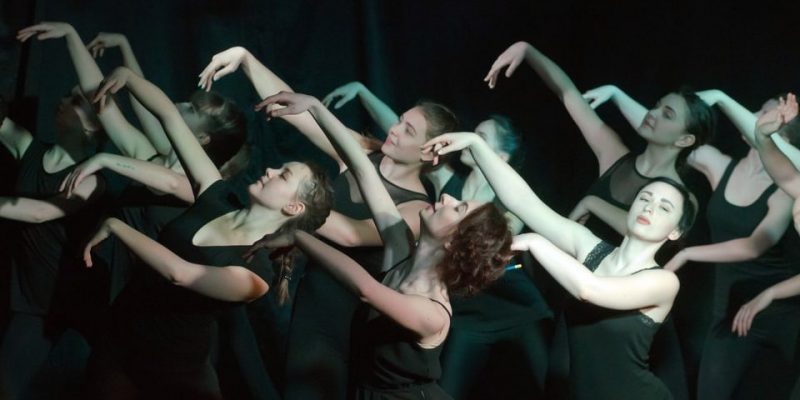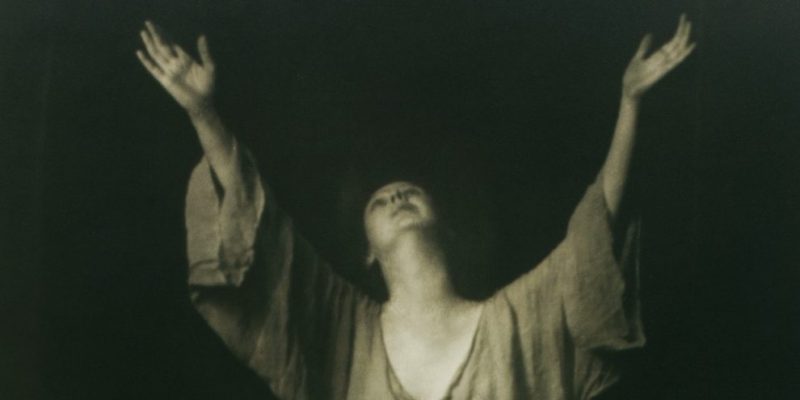We explain what contemporary dance is, its differences from classical ballet and characteristics. Furthermore, its main exponents.

What is contemporary dance?
Contemporary dance or modern dance It is a performing art that emerged at the end of the 19th century. It was a reaction against classical forms of dance (especially classical ballet) and responded to a cultural need in the West to express themselves more freely with music and the body.
While classical ballet opted for stylized and conventional forms, contemporary dance broke out with more aggressive forms, which represented both the beautiful and the ugly of life. It went against traditional canons, by not requiring a homogeneous outfit, or incorporating different surfaces and environments into the choreography.
The origins of contemporary dance date back to the late 19th and early 20th centuries, as a reaction against the restrictive dynamics of traditional dance. It was created by dancers such as the Americans Loie Fuller (1862-1928), Isadora Duncan (1877-1927), Ruth Saint Denis (1879-1968), Martha Graham (1894-1991), Doris Humphrey (1895-1958) and the German Mary Wigman (1886 -1973).
Stages of such importance as the Paris Universal Exhibition or the London stages of the time were the first places where this new proposal began to be shown to the public, with barefoot dancers and less rigid choreographies.
However, soon this active search for freer expression inspired many other artists who were already suffering from expressive restrictions. Thus, until the Second World War there was talk of “modern dance” to collectively refer to these new trends. But From the 1940s onwards, a true whirlwind of styles and trends was called contemporary dance conceived within the new genre.
See also: Art
Dance characteristics
Broadly speaking, contemporary dance is characterized by the following:
- Avant-garde stage management with respect to the classic ballet stagings: different and sometimes mismatched clothing, unusual settings in which the floor plays a role in the dance, sound effects, visual effects, sets and a set of choreographic elements that incorporate a dramaturgical sense to the dance. The choreographer, therefore, makes creative decisions and pursues concepts, experiments and expressive searches through the management of the stage.
- The dancers' movements are no longer as rigid or rhythmic as in ballet, but rather draw on different influences and trends. In general the movements are freer, more daring and innovative. The preciousness of classical ballet is far away.
- It breaks with the conventions according to which a man had to carry a woman in montages, allowing several men to carry a woman or a woman to carry a man. The traditional roles of the dancer are left behind.
- Constantly pursue change and is not afraid to incorporate elements from other traditions musical or rhythmic (African, Asian, etc.).
- Your bet is type expressionist, in the sense of reflecting emotional interiority of artists and try to express subjective content, instead of classical and impersonal beautiful forms.
Main exponents of contemporary dance

There have been many innovators and cultists of contemporary dance in its more than 100 years of history, and in general there is a tendency to classify them into two different schools: the American one, born in the United States, and the European one, both over three generations. of artists and creators. Among the main exponents of both schools we find:
- Loie Fuller. Born in the United States in 1862, she was an important dancer, actress, producer and writer, whose work had an immense impact in Europe, with more than 130 new dances in which she incorporated visual effects, with floating fabrics and multicolored lights.
- Isadora Duncan. American dancer and choreographer born in 1877, she is generally considered the creator of contemporary dance. Turning to classical Greek precepts, Duncan reinterpreted dance movements to aspire to more natural forms, with greater emotional expression, hand in hand with expressionism. Aware that she was a revolutionary in her genre, she did not always have the acceptance of an audience accustomed to classical forms: during her South American tour in 1916, for example, she had numerous problems with both colleagues and the public, whom she finally insulted. in Buenos Aires during a staging, accusing them of being uneducated.
- Rudolf von Laban. Hungarian master of modern dance, born in 1879, inaugurated his Choreographic Institute in Zurich, Switzerland in 1925, which later had large and important branches in the rest of Europe. In 1928 he proposed a method of mathematical notation of utmost importance in the art of choreography (Labian notation). He died in 1958 in Surrey, England.
- Mary Wigman. Born in Germany in 1886, she is considered the main European promoter of expressionist dance. She was a student and assistant of the teacher Rudolf von Laban, and was closely linked to the German expressionist literary group Die Brücke, and to the Zurich Dadaist group during the First World War. In 1920 he created his own contemporary dance school.
- Jose Limon. Mexican dancer born in 1908 and died in the United States in 1972, he was a dance teacher and choreographer, creator of his own style that highlighted the male role in dance, and considered a precursor of contemporary dance.
Continue with: Folk dances
References
- “Contemporary dance” on Wikipedia.
- “Contemporary dance” at the University of Lima (Peru).
- “Contemporary dance: what it is, techniques and origin” on Todo Ballet.com.
- “Contemporary dance, what is it and what does it consist of” in Dance Emotion.
- “Brief history of contemporary dance” in Bibliodanza.





